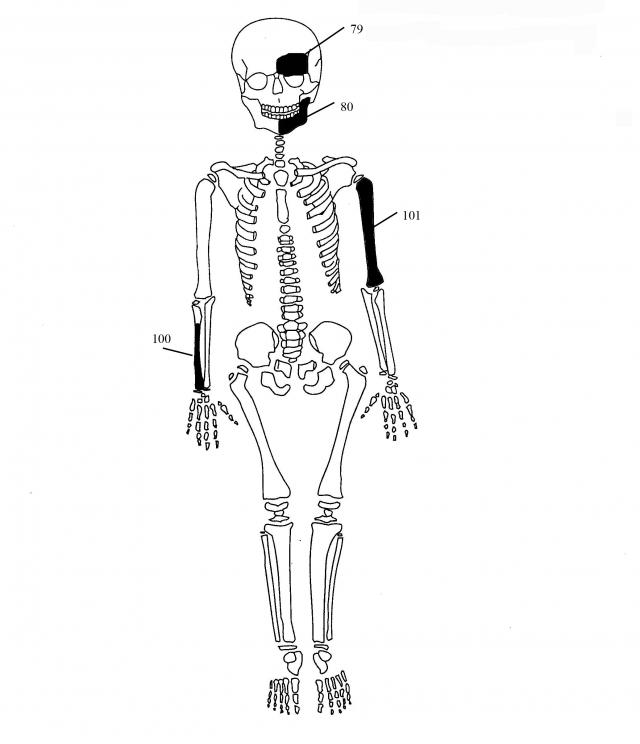Not one but five skeletons have been discovered in the tomb in Amphipolis by archaeologists, as stated in an official communication of the Ministry of Culture.
It seems that the impressive tomb was a family tomb and archaeologists have discovered the following:
- The skeleton of a woman aged over 60 (information on her had been published previously)
- The skeletons of two men aged 35 and 45
- The skeleton of a baby
- The cremated skeleton of a man (he was cremated before the time when the other four died).
DNA analysis will provide more detailed information on the skeletons and will confirm or refute the assumption of archaeologists that it is a family tomb.
The official communication of the Ministry of Culture
The skeletal remains in the Kasta tomb in Amphipolis consist of nearly 550 bones, intact and broken, one skull in fairly good condition, which lacks the facial bones and one lower jaw that is almost intact. No teeth have been found except for one carious root of the second lower premolar in the lower jaw.
Of the 550 bones discovered, 157 have been described in detail in a database in an attempt to associate them with the relevant persons.
Animal bones have also been identified, some of which appear to have belonged to hoofed animals. The animal bones will be examined by a specialist zooarchaeologist.
The skeletal remains have contributed towards the identification of at least five people, four of whom were buried and one cremated.
The buried deceased include one woman (skeleton 1), two middle-aged men (skeletons 2 and 3) and one baby (skeleton 4).
Skeleton 1: Female
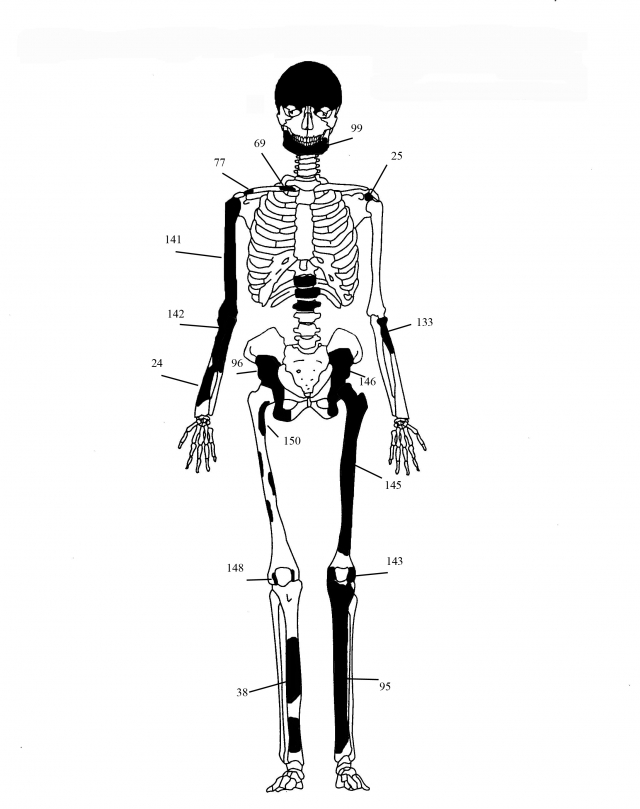
The woman can certainly be placed in the age group of over 60 years. Gender determination is based on certain indicators as follows:
1) pelvic bones
2) cranial bones
3) lower jaw
4) bone morphology (measurements of long bones).
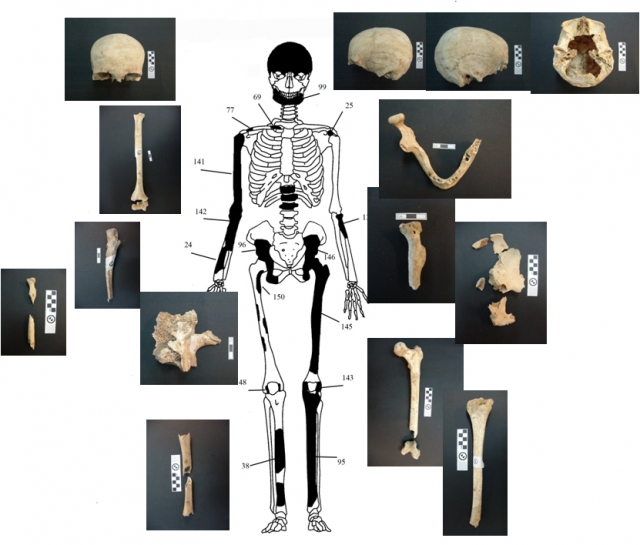
The woman's age is determined on the basis of:
1) part of the symphysis of the left pubic bone (front of the pelvis)
2) the degree of synostosis (closing) of the cranial sutures
3) posterior teeth on both sides of the mandible that were missing while the woman was still alive
4) the presence of metabolic diseases such as osteoporosis and frontal hyperostosis (Hyperostosis
Frontalis Interna: sealing the frontal part of the skull, which is associated with hormonal imbalance and occurs frequently in postmenopausal women)
5) pronounced degenerative changes, mainly in the spine
6) endochondral ossification of long bones and ribs.
As for the height of the elderly woman, after the combined application of different measurement methods of the long bones, experts believe that she was 157 cm tall.
It seems that the majority of the bones found by archaeologists in the first grave belong to the female skeleton.
Skeletons 2 and 3: Two men aged between 35 and 45
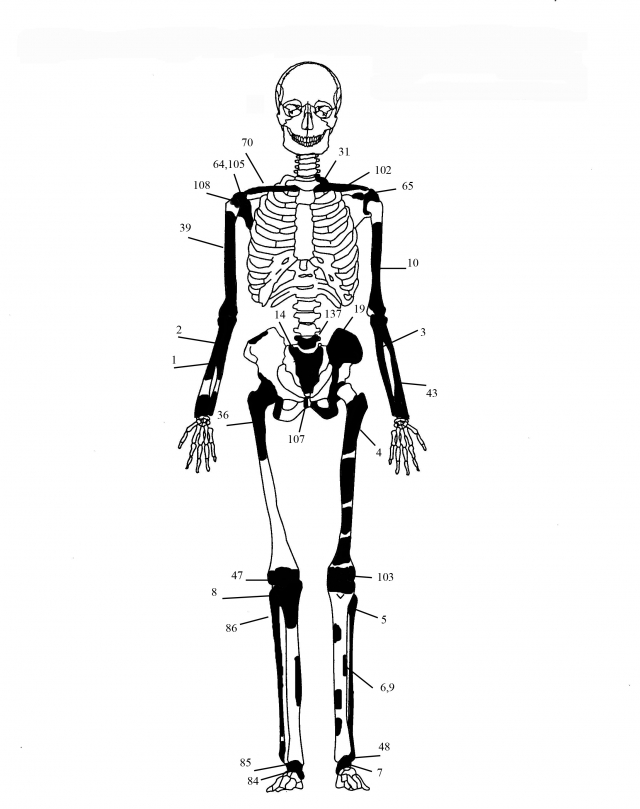
Skeletons 2 and 3 of the 4 buried persons can certainly be defined as the skeletons of men, based on:
1) the anatomical data of the pelvic bones
2) the morphological structure of the long bones (measurements of long bones).
Both men are relatively close in age, in the 35-45 age group, one of them being at the beginning and the other at the end of the age group.
The approximate age of the first man is determined on the basis of:
1) pubic symphysis of both pubic bones of the pelvis (the front of the pelvis)
2) degenerative changes in the pelvic area where it is associated with the tailbone (sacrum)
3) complete synostosis of the epiphyseal plates at the edges of the breast bones and the two clavicles.
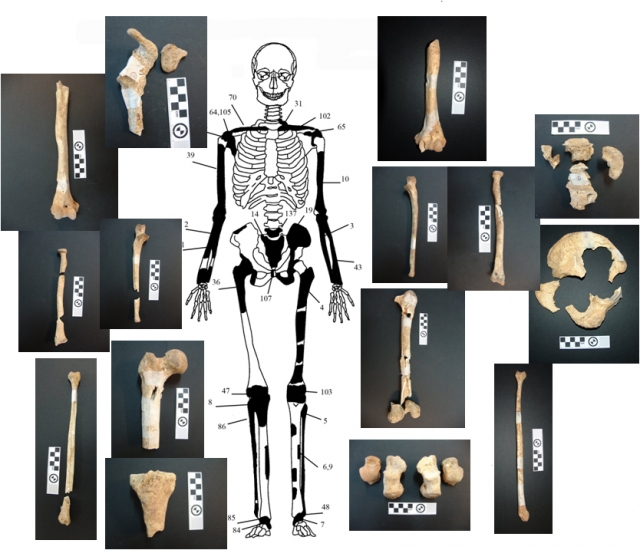
The approximate age of the second man is determined on the basis of the symphysis of the right pubic bone.
It should be noted that, on the skeleton of the younger of the two men, there are cut marks in the upper left part of the chest, on two ribs and a cervical vertebra and on the lower part of the breast bone on the left collar bone.
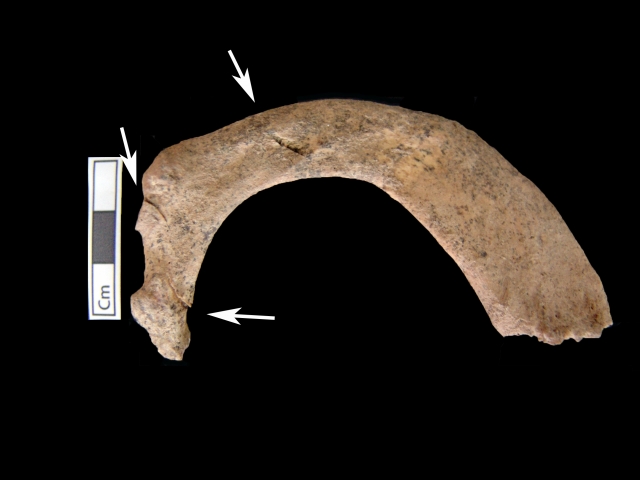
These marks are associated with hits that had caused injuries. They must have been inflicted at close range with a sharp object such as a knife, causing the death of the man, because there are no visible traces of wound healing.
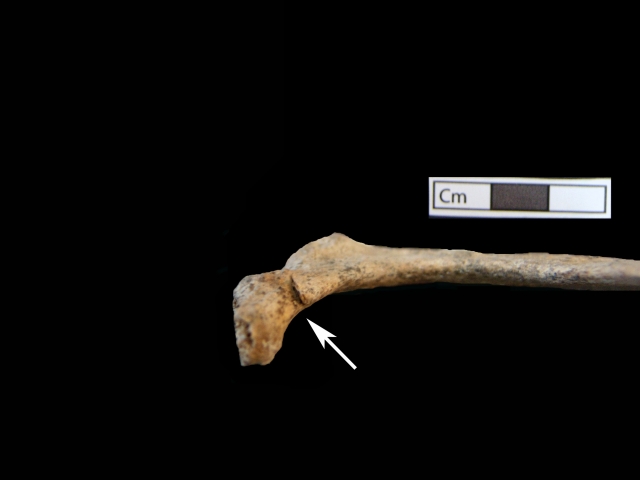
The second man, who is a little older than the first, has traces of a completely healed transverse fracture of the right ulna, relatively close to the right wrist.
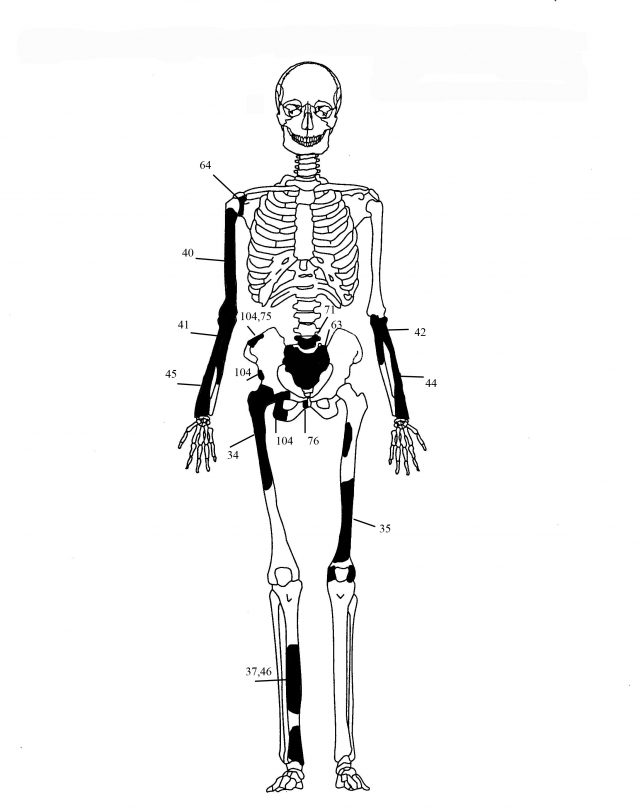
Furthermore, in both men there are traces of osteoarthritis and spondylitis in different parts of the skeleton.
As for the height of the two men, after the combined application of different measurement methods of long bones, experts believe that the first man was 168 cm tall and the second 162-163 cm.
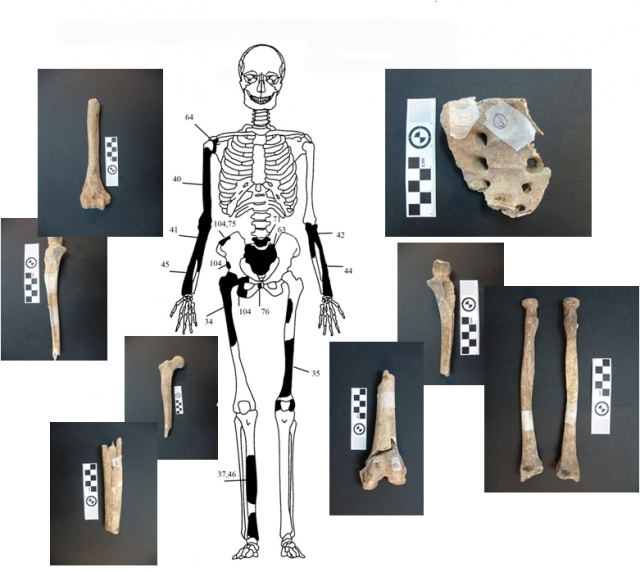
Skeletons 4 and 5
The fourth skeleton belongs to a newborn baby.
